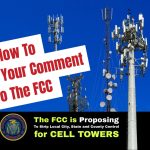
The U.S. Environmental Protection Agency (EPA) today announced strict new rules to limit cancer-causing compounds and other pollution from more than 200 U.S. chemical facilities.
The EPA says the rule — created under the Clean Air Act and focused on six pollutants including ethylene oxide, chloroprene, benzene, 1,3-butadiene, ethylene dichloride and vinyl chloride — will reduce toxic air pollution near these plants by roughly 6,200 tons annually, protecting the health and reducing the cancer burden of nearby residents.
“President Biden believes every community in this country deserves to breathe clean air,” said EPA Administrator Michael S. Regan, in a statement. “We promised to listen to folks that are suffering from pollution and act to protect them. Today we deliver on that promise.”
The agency examined the health impacts of air pollution within six miles of the chemical plants and estimates the rule will reduce the number of people with elevated cancer risk due to air pollution by 96%.
Chemical plants are most densely clustered in Texas and Louisiana along the Gulf Coast, with pockets of plants in the Ohio River Valley as well, and Black and Latino communities often border the plants. In addition to reductions, the rule requires fence-line monitoring for any company that makes, uses, stores or emits any of the six chemicals. Many of these communities currently lack adequate air monitoring.
Some plants, such as those that produce neoprene, will have 90 days to begin fence-line air monitoring, while synthetic organic chemical manufacturers, for example, will have two years as those plants and laboratories voiced a need for additional time to prepare the monitoring. The results will be public.
“President Biden believes every community in this country deserves to breathe clean air.” – EPA Administrator Michael S. Regan
If the fence-line monitoring shows chemical levels higher than allowed, the plants must find out the cause and make repairs.
“Today marks a victory in the pursuit for environmental justice, with the final rule poised to significantly reduce the toxic air pollution that harms communities in Texas’s Gulf Coast, Louisiana’s Cancer Alley, and throughout the U.S.,” said Earthjustice Vice President for Healthy Communities Patrice Simms, in a statement.
The rule will more tightly regulate flaring and remove existing air pollution emissions exemptions from startups, shutdowns and malfunctions at plants.
The American Chemistry Council, which represents chemical manufacturers, said while it appreciates the “EPA addressing some concerns raised by stakeholders” it is concerned with the “recent onslaught of chemical regulations being put forth by this administration.”
The Council specifically disagreed with the rule’s removal of air pollution exemptions during plant leaks and repairs, and said the agency used a “deeply flawed” value in estimating the health risk from ethylene oxide.
“Unfortunately, the value’s continued application in this rule along with EPA’s reliance on outdated emissions data has led to a final rulemaking based on inflated risks and speculative benefits,” the Council said in a statement.
While the Council said the rule could hamper certain industries including agriculture, health care and electric vehicles, the EPA points to money saved over the next 14 years via health benefits — including roughly $77 million from reduced short-term ozone exposure, and $690 million from reduced long-term ozone exposure.
Environmental and health advocates, however, lauded the rule, saying it was a victory for both public health and environmental justice.
“Everyone has the right to breathe clean air, but for far too long, communities on the fence-line of the petrochemical industry have been exposed to pollution that threatens their health,” said Dionne Delli-Gatti, associate vice president for Community Engagement at Environmental Defense Fund, in a statement. “EPA’s stronger standards can help keep communities safe from toxic air pollution.”
See the full new rule.




